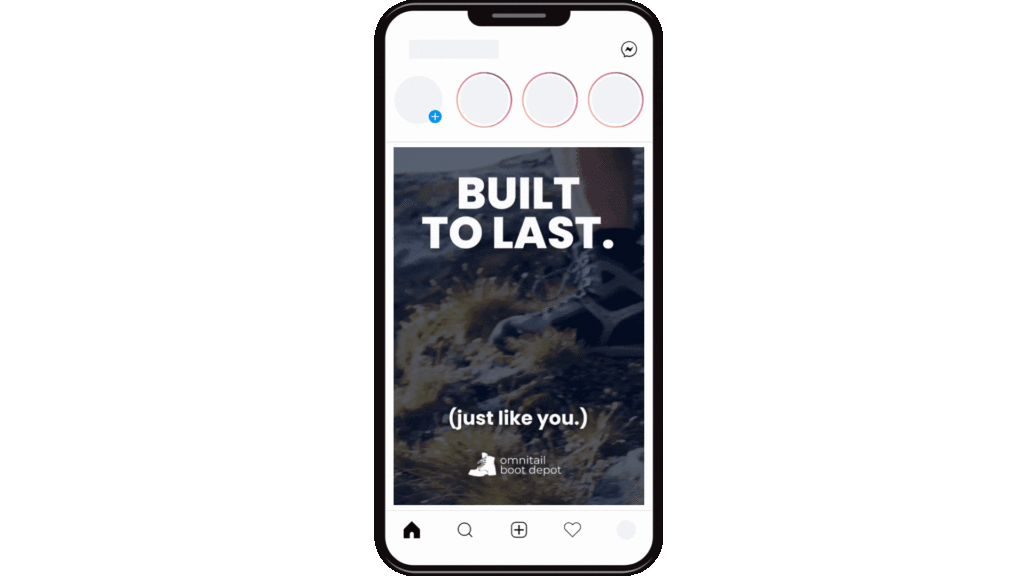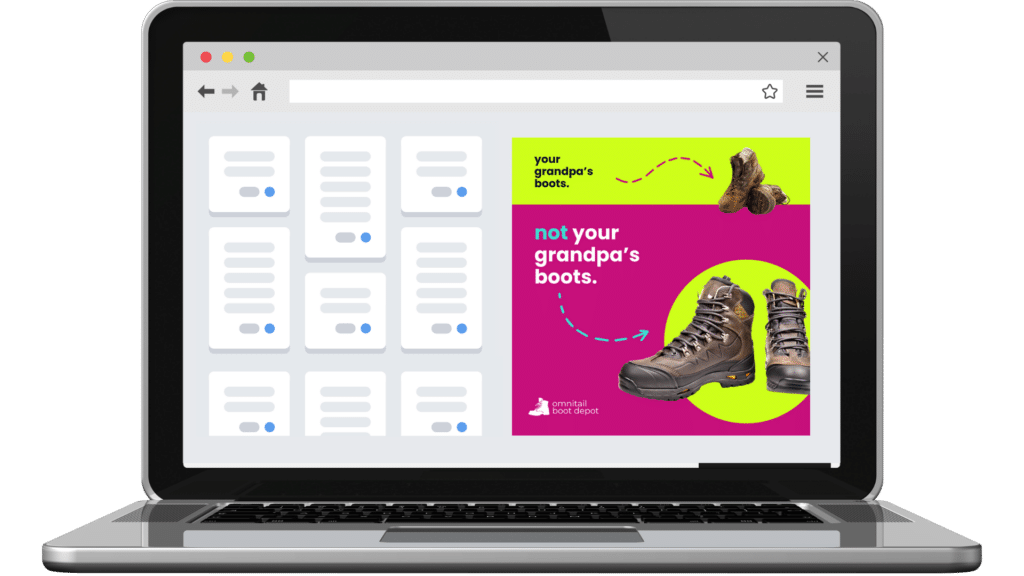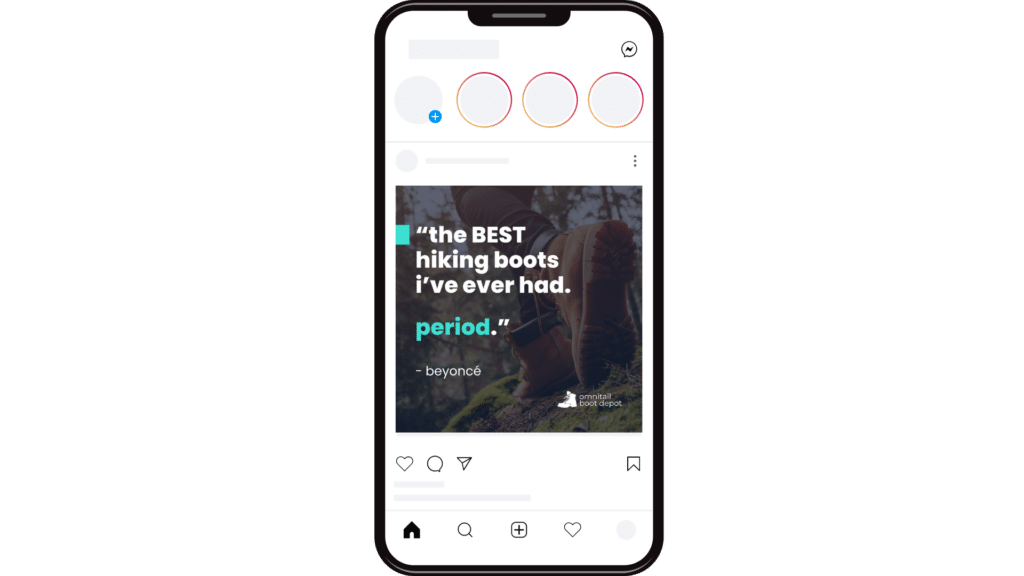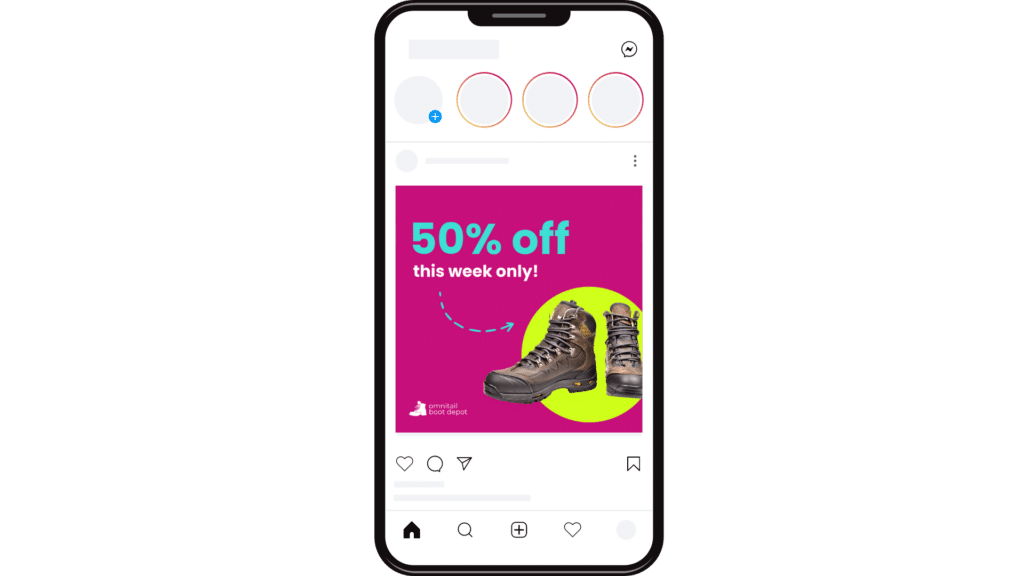To maximize conversions and profitability, it’s imperative for eCommerce business owners to understand the many nuances of the buyer’s journey. Why? Because every time a shopper embarks on their path to purchase, they navigate through many touchpoints that help shape their decision-making. When you’re able to make every touchpoint memorable, it’s more likely the shopper will purchase your product and begin their passage to brand loyalty.
So, what exactly should your brand do to effectively engage and guide these shoppers through each stage of the buyer journey? In this blog post, we’ll discuss the creative ad formats that are optimal for each stage, as well as the different approaches you can take with creative strategy in advertising. This way, shoppers transition from being aware of your products, to buying them.
Navigating the Awareness Stage of Creative Strategy in Advertising
In the awareness stage, consumers recognize the existence of a problem and start their initial search for a solution. When a shopper encounters an advertisement for your brand at this time, it marks their first exposure and impression to your product, service, or company—also meaning they’ve entered the awareness stage of the buyer journey.
In this stage, it’s important that your ads captivate consumer attention by shining a spotlight on the issues your brand effectively solves. Consider a scenario where a potential customer, like an avid hiker, is in search of new hiking boots. As an outdoor brand offering an array of trekking footwear, your goal during the awareness stage is to grab the shopper’s attention and showcase the advantages of your product. Think about your unique value proposition; highlight it using compelling, on-brand visuals and messaging that resonate with this audience’s concerns so it draws them in to want to learn more.
For example, if your brand’s most popular hiking boots have excellent gripping power for rugged terrains, mountains, and muddy areas—emphasize it to plant the seed and grab their attention. Highlight any other benefits such as a lifetime warranty or hassle-free lace replacements to start crafting the story of why they should choose your product over the competition. Once you’ve figured out what messaging you’ll use, decide on the best ad creative and placement (including programmatic, connected TV, and others) to meet this stage’s goal.
Responsive ads: These ads are ideal to use in the awareness stage because they automatically adjust their size and appearance to fit the available ad space. This means the ads are adaptable—they might appear smaller on mobile, but larger on desktop, etc. By creating a responsive ad, you ensure it appears correctly on the variety of devices shoppers use, including desktops, smartphones, tablets, and more.

Search ads: These text-based ad placements help ensure your brand prominently appears when someone queries hiking boots or any other gear related to hiking on Google, Bing, or any other search engine. At this stage in their journey, the shopper doesn’t know which brand or store offers the boots they want or need, so placing search ads for related items can increase brand awareness and potentially lead to more click-throughs.

Social media ads: Social media ads (aka paid social) are ideal for the awareness stage of the buyer’s journey because of the sheer amount of people available for introducing your brand. As of 2024, over 5 billion people worldwide have at least one social media account, which means your brand can use paid social ads to reach a large audience not yet familiar with your products. These ads can be targeted based on demographics, interests, and behaviors, which makes them effective at generating initial interest.

Exploring the Consideration Stage on the Path to Purchase
The consideration stage is the next stop on a shopper’s path to purchase. Now that the consumer has identified their problem, completed their initial research, and is comparing your brand’s products to others, they are considering your product.
To illustrate this stage using our hiking boots example, the shopper has found some from your brand that they like and is evaluating them alongside competitors’ boots. The shopper is intentionally conducting competitive research and seeking reasons why they should buy your hiking boots.
When creating ads for the consideration stage, it’s important to focus on your brand’s competitive edge and provide proof of your product’s unique value propositions. Doing this will really solidify your product as the best option when the shopper is traveling down their path to purchase. Here are some creative ad formats that work well in the consideration stage:
Display ads: These are effective because you can use them to retarget shoppers who have previously visited your site, engaged with your brand on social media, or scanned a QR Code from a connected TV spot. Because display ads are visual in nature, they can quickly communicate valuable information, such as product features, benefits, and customer reviews, as shoppers are evaluating options.

Comparison/Us vs Them ads: This creative format is a side-by-side comparison of your product with that of your competition, typically highlighting features and benefits. It often evokes an “us vs. them” dynamic that positions your product as the superior choice. Overall, comparison ads empower shoppers to make informed purchase decisions and choose the best solution for their needs.
For example, you could create a comparison ad demonstrating how your hiking boots stack up against competitors in terms of quality, price, and features like ankle support, water-proofing, and adjustable lacing systems. Or you could lean into the us vs them strategy and develop an ad that shows an unhappy hiker before they try your boots.

Product demonstration ads: Give shoppers a tangible representation and understanding of your product’s key features and how it works. By showcasing the product in action, it helps potential buyers envision how it could meet their specific needs, which encourages them to consider making a purchase.

How Creative Strategy in Advertising Impacts the Decision Stage
While creative strategy in advertising can assist at all stages in the buyer journey, it’s ideal to use it in the decision stage; you should fine tune key elements like brand voice, target audience, and market research to help you guide shoppers in making their final purchase decision. (If you need help doing this—don’t worry. Our creative services agency is here to take the burden off and create thumb-stopping, high-performing ads for you).
During the decision stage, the shopper is deciding on the right product or brand to provide the solution they’ve been searching for. When looking at our hiking boots example, this means the shopper has nailed down the footwear they want, but they just need that extra push to actually buy it. Reasons for their hesitation might include price/investment and seasonality (i.e. do they need these boots right now, or will they need them in four months?). You can implement the following advertisements to further influence their decision to buy sooner rather than later:
Customer testimonial ads: These ads praise product performance and work very well during this decision stage. Shoppers want to know that your product is real and reliable, and they prefer hearing about it from the positive experiences of real customers.

Promotional ads: These are most often seen as first-party banner ads on your website offering a limited-time promotion on a product, encouraging visitors to take advantage of the deal before it expires. Putting an expiration date on the ad instills a sense of FOMO (fear of missing out) in this stage and can make shoppers take action now and make that final purchase decision. Including a coupon with first purchase, or free shipping for new customers, is also a proven approach.

Retargeting ads: Showing the same ad (or ads within a cohesive campaign) many times to a shopper is an excellent play throughout the buyer’s journey, but is especially critical during the decision stage. Why? Because repetition of ads reinforces brand/product awareness and familiarity. The Marketing of Rule of 7 is a proven strategy that states a person needs to see an ad at least seven times before making their final purchase decision.
Seeing an ad multiple times can strengthen the memory and perception of your brand in the shopper’s mind, making them more likely to trust and choose it when making a purchase decision. Plus, these ads use interest-piquing language with clear calls-to-action like, “We’ve picked these boots just for you,” or “These boots were made for you!”

The Omnitail Difference
It’s easy to pour money into advertisements without fully understanding the impact their performance has on your business. That’s where The Omnitail Difference comes in: A transparent, full-service creative services agency that focuses on boosting your paid performance on Meta, Amazon, Google, and more with our innovative approach to ad development.
We are committed to making your advertising work for you and your bottom line through data-driven and creative strategies, continuous testing and optimization, and transparent reporting that measures success through overall profitability instead of vanity metrics. Contact us today to learn how we successfully incorporate creative strategy in advertising.
Elevating Each Stage of the Buyer Journey with Creative Services
Our creative services agency is ready to help you create memorable and captivating advertisements tailored to each stage of the buyer journey. Reach out to us to talk shop and learn more about how we can help you improve your brand’s profitability, increase conversions, and get on the fast track to advertising success.








